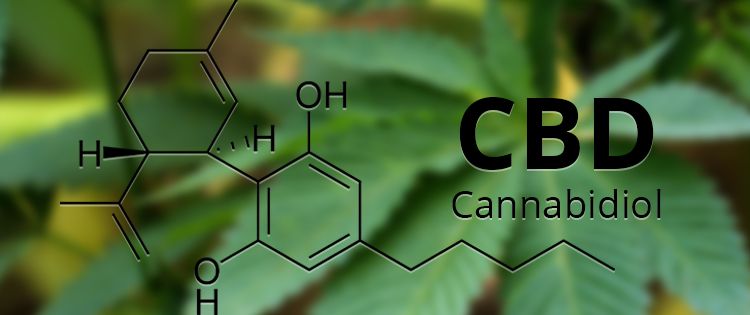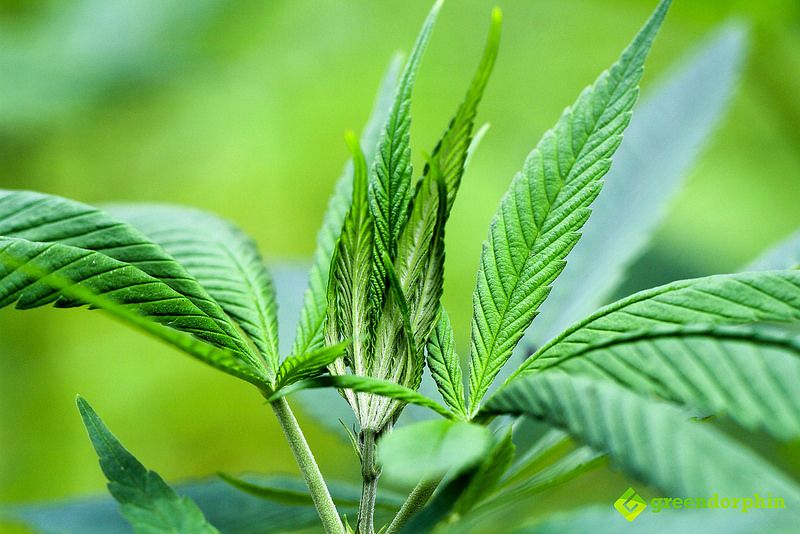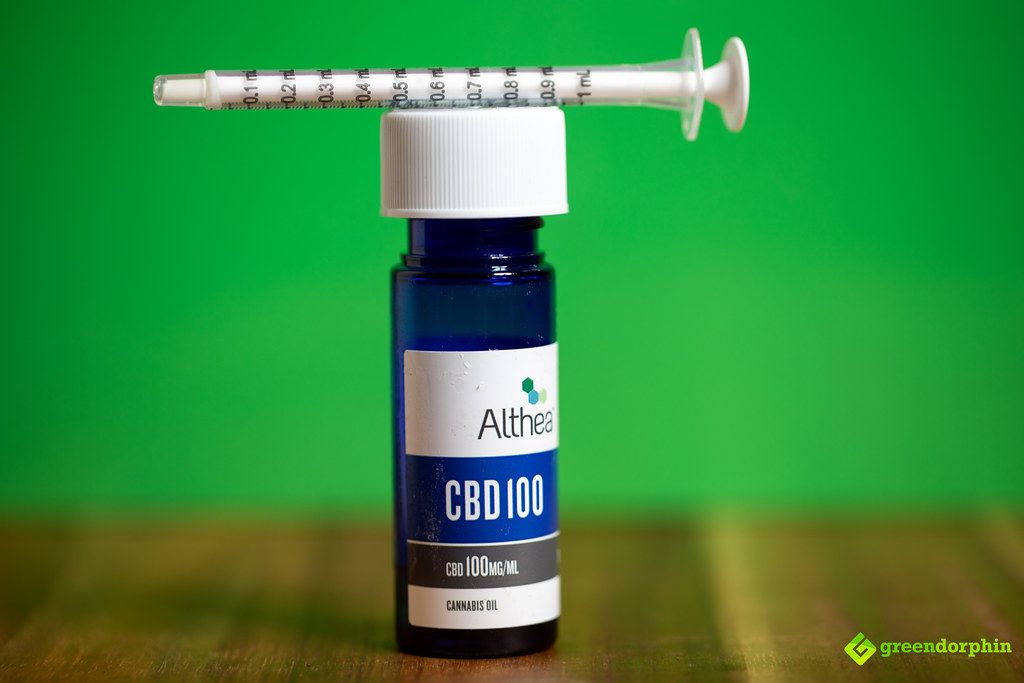During its early studies, the CBD industry started with controversies and discord, but it has now transformed into a billion-dollar industry.
Various CBD companies are focused on bringing in new, innovative CBD products for its consumers. While some health-focused businesses are also starting to release CBD-associated products. Often, you can find CBD products in every health and wellness store that you’ll pass by.
But what makes CBD so popular? Why do people love CBD-infused products?
In this article, you’ll learn what makes CBD and CBD products so significant today, the different CBD extraction methods, particularly the full-spectrum CBD, its advantages and disadvantages, and how to choose the right full-spectrum CBD products.
Cannabidiol: The Wonder Compound
Whenever people hear about the cannabis plant, the first thing that they associate it with is marijuana and its euphoric effects to a user.
Unfortunately, the controversies surrounding marijuana became a disadvantage to the cannabis plant, and people didn’t know what they’re missing. Once they hear ‘cannabis plant,’ they can only think of being high and ecstatic.
However, the cannabis plant needed and deserved more attention because of the numerous misconceptions about it. The ecstasy-inducing effects of using marijuana should be accounted to the psychoactive constituent of cannabis known as the tetrahydrocannabinol (THC).
You’ll feel high from consuming marijuana because of its average to high THC amounts. But THC is only one of the 113 cannabinoids present in the cannabis plant, and there’s a better and more wonderful compound than THC, which is cannabidiol (CBD).

Cannabidiol is one of the most prevalent compounds found in the cannabis or hemp plant. It’s also considered a safer and healthier counterpart of THC.
Basically, CBD holds more potential for health and wellness than THC does because this compound works in a natural, non-psychoactive, and non-intoxicating approach.
Today, CBD is incorporated into numerous products, both for general health use and as a supplement for the treatment of a variety of health conditions.
How Does CBD Work?
THC and lesser cannabinoids work by directly interacting with your body’s receptors. But CBD doesn’t exactly do the same.
CBD works by stimulating the endocannabinoid system (ECS) of the body to generate its own cannabinoids, improving cell-to-cell communication that controls numerous biological functions, including immune response, temperature regulation, appetite, mood, memory, fertility, and pleasure perception.
Also, CBD inhibits the production of the fatty acid amide hydrolase (FAAH) enzyme, which slows down the breakdown of cannabinoids so they’ll stay longer in your system.
The Lucrative Market of CBD
Since CBD became a star ingredient in wellness products and some of the first companies tapped into the CBD market, other businesses also jumped into the trend.
Currently, there are more than 1,000 brands in the market that sell CBD products, with almost 85% offering hemp-derived CBD with less than 0.3% THC content, while 15% selling cannabis-derived CBD, or those with a higher THC content.
Whether a quick remedy for anxiety, sleep, muscle tension, or chronic pain relief, people are turning to CBD being a cure-all for various health conditions today.
In fact, a survey highlighted that 10% of Americans, between the ages of 18 to 44, are regular CBD users. By the year 2022, the CBD market is projected to reach roughly USD$2 billion.
Because of this, the CBD market continues to expand its product options. These products have varying methods of consumption, concentration, ingredients, and formulations.
Some manufacturers put misleading information in their products to rob excited CBD users. An expensive tag doesn’t always mean better quality, so you should know how much is CBD and how the prices fluctuate accordingly. Therefore, it’s important to be a wise consumer and evaluate what you’re paying for.

How is CBD Extracted?
Since the cannabis plant is composed of more than a hundred cannabinoids, it’s a big challenge for CBD manufacturers to isolate CBD compounds from other cannabinoids without losing too much of its purity and quality.
Currently, there are four effective ways to extract CBD from the cannabis plant:
Oil Extraction
Oil extraction is the easiest and most straightforward among these four CBD extraction methods, and even personal growers can perform this at home.
Initially, the cannabis plant is heated at a certain temperature to activate its cannabinoids. Then, the plant is submerged in a carrier oil. Since CBD is a fat-soluble compound, it’ll activate and bind better in oils and fats.
Since it’s more of a DIY and less regulated process, expect inaccuracy and lack of consistency when making more than one batch of products.
You’ll also have to use a lot of your chosen carrier oil to achieve your desired product amount because you can’t evaporate the carrier oil out of the CBD oil.
Steam Distillation
Since this process has always been utilized to extract essential oils from any plant, the steam distillation technique isn’t new in the manufacturing industry. With the help of steam, the oil vapors will separate from the plant material, then condensed into oil form.
Despite being tried and true across various industries, steam distillation isn’t a reliable process when it comes to CBD extraction.
The extreme heat generated by the steam can eventually damage the CBD extract, affecting its efficiency. Also, it’s more difficult to extract an exact amount of CBD, resulting in inconsistent CBD concentrations in the resulting products.
Solvent Extraction
Instead of using steam from water, this method involves the use of solvents, which are divided into two types: hydrocarbon solvent extraction and natural solvent extraction.
In hydrocarbon solvent extraction, the solvents used to extract CBD are hydrocarbons, such as butane, propane, petroleum, and naphtha, and yields consistent CBD concentrations without any chlorophyll residues. However, they have potential health risks due to toxic residues from the hydrocarbons.
On another end, natural solvent extraction fulfills what hydrocarbons can do, that is, the absence of potentially toxic residues. In exchange, you can obtain lower CBD concentrations and contain chlorophyll, giving it a bitter taste.
Carbon Dioxide (CO2) Extraction
As its name indicates, carbon dioxide will play an important role in this extraction process, particularly a supercritical CO2 having qualities of both the gaseous and liquid state. CO2 extraction is sometimes called ‘Supercritical Fluid Extraction (SEF).’
In this process, the supercritical CO2 and cannabis plant material is placed in pressurized chambers that are pumped with low temperatures. As the CO2 breaks down the plant material, the oils of the cannabis will separate from the plant itself. Lastly, the oil and CO2 are pumped in the last chamber where the supercritical CO2 will return to its gaseous state, then evaporates to leave the CBD oil behind.
Generally, CO2 extraction is the most efficient method that yields the highest CBD concentration without any toxic impurities, but the setup is very expensive.
After extracting the CBD, the resulting CBD oil is called the full-spectrum CBD, which comprises other cannabinoids that contribute to its efficacy.

Here are a few cannabinoids and compounds present in a full-spectrum CBD after CBD extraction:
- Tetrahydrocannabinol (THC)
- Cannabidiolic acid (CBDA)
- Cannabidivarin (CBDV)
- Cannabichromene (CBC)
- Cannabinol (CBN)
- Cannabigerol (CBG)
- Amino acids
- Terpenes
- Flavonoids
Once full-spectrum CBD is obtained, some manufacturers proceed in making the product, which will be marketed as a “full-spectrum CBD” product when they reach the stores.
On the other hand, some manufacturers proceed in filtering out all compounds except CBD, which will result in CBD isolates, or lessen the THC level further to produce broad-spectrum CBD.
Full Spectrum CBD and Its Full Capabilities
Now, it’ll boil down to the question, ‘should you be using a full-spectrum CBD product compared to a broad spectrum and isolate CBDs?’ The answer, generally, will depend on your CBD’s purpose, as well as your personal needs and preferences.
People who want to enjoy everything that cannabis has to offer will benefit the most from a full spectrum CBD, especially to achieve the synergy while using the product, known as the entourage effect. The entourage effect refers to how the cannabinoids and compounds work synergistically with one another to deliver maximum health benefits to users, without making them feel high.
As demonstrated in a study, the use of pure CBD showed a bell-shaped response, where the effectiveness was increasing, but only up to a certain point in the curve. Then, increasing the concentration of CBD alone reduced its effectiveness after some time.
This is an example of the effects of using CBD isolate products. Conversely, increasing CBD dose along with the cannabinoids offer enhanced and consistent effects because of the entourage effect.
Another advantage of using full-spectrum CBD that should be emphasized is its low THC level of not more than 0.3%, which is the legal amount in most states. This way, you’ll feel less likely the psychoactive effects of the product, which many people don’t prefer.
However, you can still feel its psychoactive effects by exceeding the dosage, so make sure that your physician is informed about your consumption of full-spectrum CBD.
Here are some of the best properties and benefits of taking full-spectrum CBD:
- Muscle spasm relief
- Chronic pain relief
- Anti-inflammatory
- Anti-seizure
- Antioxidant
- Neuroprotective
- Anti-anxiety
- Potentially helps in psychotic disorders
Lastly, full-spectrum CBD is present in countless products in the market, including the following:
- Sublingual CBD: Oils and tinctures
- Topical CBD: Ointments, balms, creams, and lotions
- Ingestible and edible CBD: Gummies, capsules, pills, oils
- Inhaled CBD: Vaping oils and juices
Drawbacks of Full Spectrum CBD
Along with the advantages that come with full-spectrum CBD are its disadvantages. It’s also important to know about full-spectrum CBD’s drawbacks so you’ll have a clearer idea of the effects of taking them continuously.
First is something that has already been mentioned before. Full-spectrum CBD allows users to achieve the full benefits of CBD and other prominent compounds, including THC.
Since THC is a psychoactive compound, it can be a dealbreaker to most people, especially those who are only looking for relief and remedy to their condition, and not for recreational use.

Choosing A Full Spectrum CBD Product
Unfortunately, some CBD manufacturers include misleading information in their products, and consumers who don’t do their research are usually tricked by this.
In the United States, the approved, legal amount of THC in your CBD product should only be lower than 0.3%.
You can check the product’s label and find if the THC percentage is indicated. CBD products with less than 0.3% THC should always be labeled as “cannabis-derived” or “hemp-derived.”
If you’re going into the cannabis market to find the perfect full-spectrum CBD for you, check out some of these helpful tips:
- Look for products with US-grown hemp as they impose more strict growing standards for cannabis quality.
- The manufacturer must be able to provide a third-party lab analysis by an ISO 170125-compliant laboratory.
- The Certificate of Analysis (COA) must show the right levels of THC, which should be lower than 0.3%.
- The Certificate of Analysis (COA) must indicate that the product is free from any heavy metals, pesticides, and mold growth.
- Have an idea of the brand’s manufacturing processes and certifications by browsing their website.
- The company has a lot of excellent reviews and feedback from different forums and discussions, and not just on their official website.
- Don’t forget to evaluate the price and amount of the product. You’ll usually encounter the pricing symbols $, $$, $$$, and $$$$, which are priced under USD$50, USD$50 to USD$79, USD$80 to USD$110, and over USD$110, respectively.
Bottom Line
Starting your journey as a CBD user is difficult and overwhelming. Before splurging your money on a CBD product, it’s important to do your research first and consult with your physician for potential complications that may occur in the future, particularly if you’re pregnant, taking medication, and under treatment.
CBD exists in many classifications, with full-spectrum CBD being one. Thanks to the ingredients of a full-spectrum CBD, users may receive enhanced and more harmonious health advantages of each product’s component. But how will you know if full-spectrum CBD is the one for you?
The answer is simple. If you’re looking for the entourage effect and therapeutic effects of CBD consumption, then you’ll be in good hands with full-spectrum CBD. However, if you’re avoiding any amount of THC in your CBD or you’re told by your doctor that you’re sensitive to THC, it’s worth looking at other CBD product types.
Hopefully, after reading this guide, you can finally decide which full-spectrum CBD product to incorporate into your health routine. You may also check out this list for full-spectrum CBD product recommendations.
- 4 Pros and Cons of Disposable CBD Vape Pens - March 14, 2023
- 10 Cannabis Myths For Beginners Debunked - February 23, 2023
- Weed Delivery Service Versus In-Store Shopping: Which Is Better? - July 22, 2022


